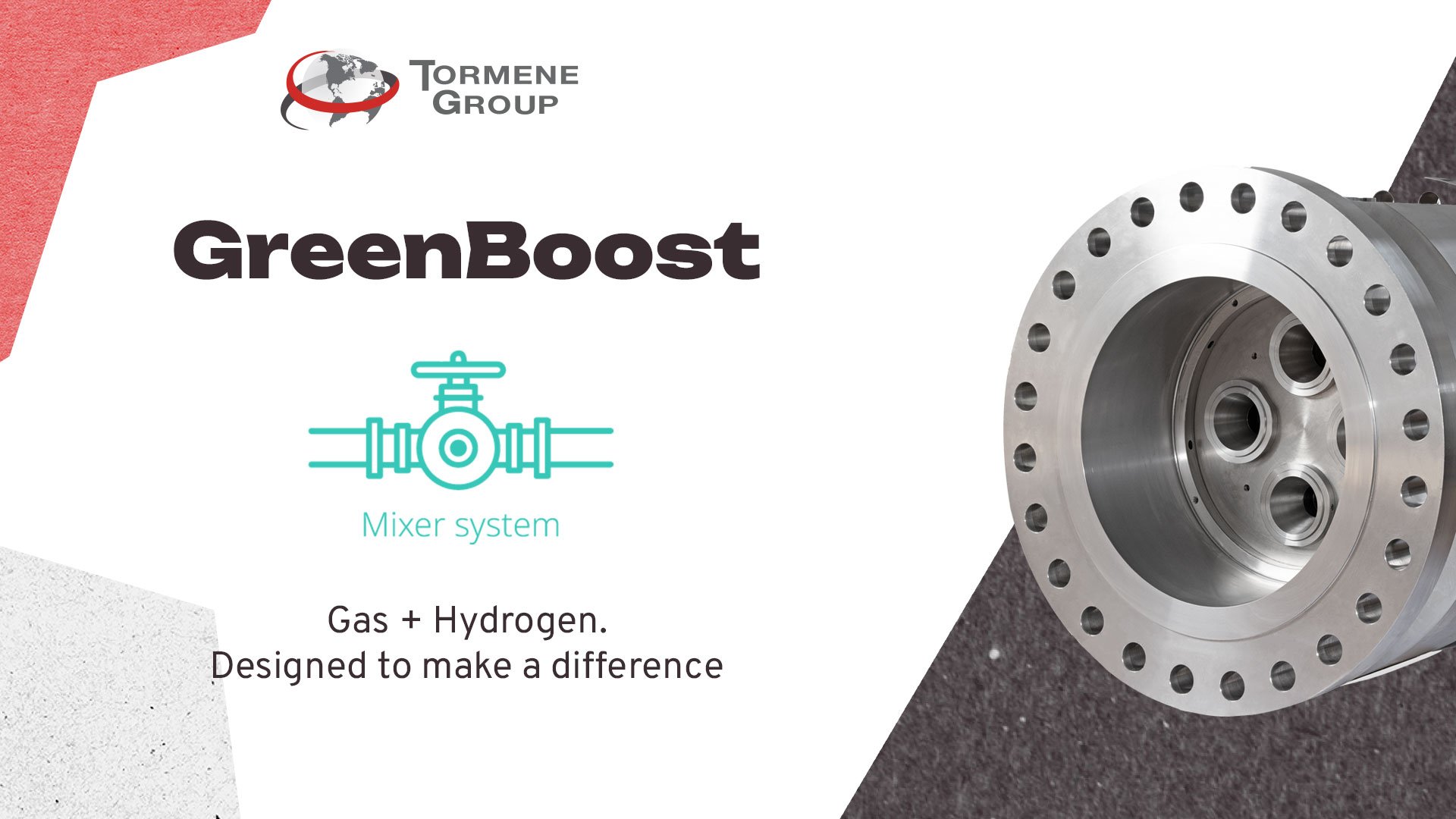
Tormene Group launches GreenBost: The static mixer that guarantees efficient mixing of hydrogen and natural gas.
The blending of natural gas and hydrogen is a very important issue in the debate onreducing greenhouse gas emissions and air pollutants. Hydrogen can be produced from different renewable sources, such as wind or solar, reducing dependence on fossil energy sources. This contributes to a greater resilience of the energy system and a reduction in the overall environmental impact.
In particular, mixing natural gas with hydrogen produced from renewable sources can reduce the amount of carbon emitted into the atmosphere since hydrogen does not produce carbon dioxide when burned. In addition, mixing can improve fuel efficiency by increasing the amount of energy produced by natural gas units.
Pilot projects to date have demonstrated the real benefits of using hydrogen blending with natural gas as a plausible solution to decarbonise the gas grid. The “HyDeploy” program in the UK, which conducted a hydrogen and natural gas blending experiment in the gas distribution network of the city of Keele, and the “Green Gas for Grid” project in Germany, which is testing hydrogen and natural gas blending in the gas distribution network of the city of Fuchstal , are very useful examples to demonstrate the feasibility and effectiveness of the use of hydrogen in the existing gas network and have in fact suggested what will be the factors to be implemented within the energy distribution path in the near future.
The UK Department of Energy and Climate Change report “Hydrogen in natural gas grids: Decarbonising the gas sector through the use of hydrogen and natural gas blends” analyses the benefits of blending natural gas and hydrogen and presents an assessment of the impact on the existing gas grid. The use of hydrogen for natural gas blending can be an effective method of achieving decarbonisation targets, exploiting the full potential of existing gas networks. At the same time, as highlighted by the article published in Science Direct last February: “Study on the stratification of the blended gas in the pipeline with hydrogen into natural gas”, there are several technical aspects to overcome in the use of hydrogen within existing natural gas distribution networks. Theuneven distribution of the concentration caused by the difference in density between hydrogen and natural gas can lead to fluctuations in the local partial pressure of hydrogen, and exceed the set pressure, leading to pipeline failures, leaks, measurement errors and alterations to the terminal equipment. Some tests show that in the situation of stagnant gas, the hydrogen-methane mixing process will cause an evident stratification phenomenon. The relationships between elevation, pressure, hydrogen fraction and gas stratification are identified. In addition, when the mixed gas flows at low speed, stratification caused by hydrogen should also be considered.
This means that existing infrastructure for natural gas transportation and distribution can be used to transport hydrogen but still needs solutions that offer a careful balance of benefits and overcome the associated technical and regulatory challenges.
From these bases, the Tormene group, in line with its vision of promoting the energy transition, has been engaged for some years in the development of hydrogen mixing stations. Here all the experience gained in over 100 years of history on natural gas networks is put in place, these are the assumptions that trace the development of innovative and technologically advanced solutions.
In 2023 Tormene patented GreenBoost, a Static Mixer that plays a key role in the mixing process. Its design ensures maximum uniformity of the gas mixture in the smallest footprint and with minimum hydrogen overpressure. The distribution of hydrogen injected into the main natural gas stream is important for many reasons. In addition to combustion issues, the reliability of a direct measurement of hydrogen concentration is also closely related to the uniformity of the gas at the sampling point. These topics represented Tormene’s drivers for the development of the new mixer.
The design of the Mixer exploits different fluid dynamic phenomena that are combined to maximize performance and to extend the operating range.
The creation of vortices in the main flow is the protagonist in the case of limited percentages of hydrogen, while the helical motion of the injected micro-flows is more effective in the case of higher percentages of hydrogen.
Another driver in the design of GreenBoost was the limit and pressure of green hydrogen, produced with alkaline or PEM technology electrolysers. The Tormene Static Mixer minimizes the hydrogen overpressure, necessary for efficient injection, allowing direct consumption of the hydrogen generated by AEC or PEM electrolysers, for most industrial applications. This is done by exploiting the Venturi effect on the main flow of natural gas.